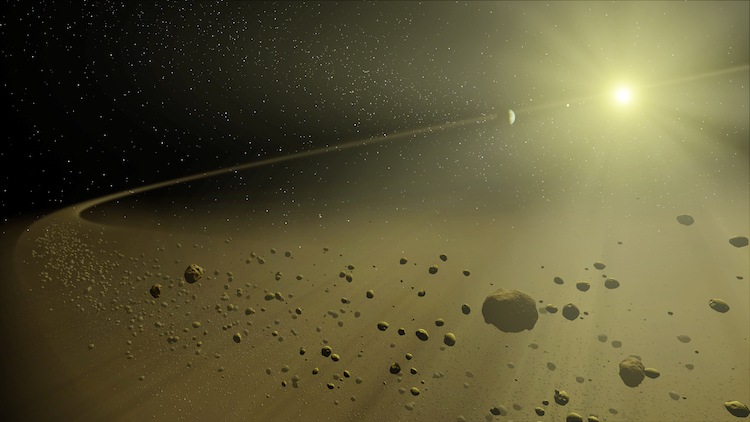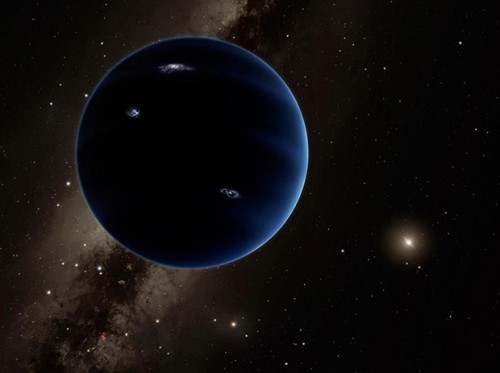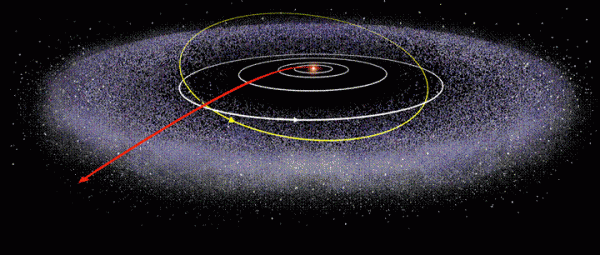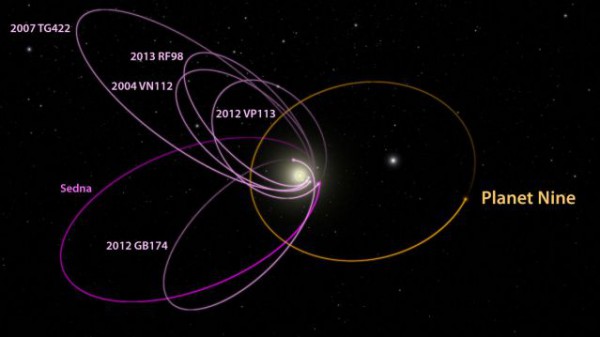
The announcement of a possible large ninth planet in our Solar System way beyond Neptune last month caused a lot of excitement, needless to say. If confirmed, it may be similar to “super-Earth” type exoplanets which have been found to be plentiful around other stars, although none, that we knew of, around ours. At this point, however, it is still a well-presented theory. Now, there’s another possibility which has been offered to explain the weird orbits of some of the small Kuiper Belt objects: not a large planet, but rather a second Kuiper Belt consisting of many smaller objects.
The new findings have been presented by researchers Ann-Marie Madigan and Michael McCourt at Harvard University, who suggest that “Planet 9” may really be “a new Kuiper Belt that’s far more massive than the current-day Kuiper Belt, at larger distances, and preferentially lifted off the plane of the major planets,” as noted in New Universe Daily. The theory will be published soon in the Monthly Notices of the Royal Astronomical Society.
The hypothesis is similar to the ninth planet one in that it says there must be more mass farther out in the Solar System to account for the odd orbits of some of the Kuiper Belt objects. But whether that mass is one larger planet or several, or more, smaller ones, isn’t known yet. The new theory says that multiple smaller objects, like those found in the known Kuiper Belt, are more likely than one larger planet.

“We need more mass in the outer Solar System,” Madigan said. “So it can either come from having more minor planets, and their self-gravity will do this to themselves naturally, or it could be in the form of one single massive planet – a Planet Nine. So it’s a really exciting time, and we’re going to discover one or the other.”
The theorized Planet 9 hasn’t actually been seen yet; it’s existence was inferred from the data about the strange orbits of six Kuiper Belt objects. As Madigan noted in Space.com, the “argument of perihelion” of those objects, the ratio of how much they pitch (wobble forward or backward) to how much they roll (move left or right) as they orbit the Sun, should be random, but in this case, they’re not. She compared them to several boats moving across San Francisco Bay, all pitching and rolling in the same direction at the same time.
“That would be really strange,” she said. “And so this is why it’s so strange that these minor planets in the outer Solar System are doing this.”
Since the movements are not as random as they should be, something must be gravitationally influencing them. That’s where the two different theories come in.
Madigan and McCourt suggest that the objects in the second theorized Kuiper Belt could “self-organize” by pushing and pulling on each other. The resulting odd orbits would have been shaped within the first 600 million years of the Solar System’s birth, if there was at least the equivalent of the Earth’s mass among the separate objects.
“So we really need that much mass in minor planets for this to happen in the Solar System,” Madigan said. “If there was much less mass, this wouldn’t occur [with]in the age of the Solar System.”
If this model is accurate, it would imply the existence of a second Kuiper Belt, farther out and more massive than the one we already know about.
“We should have a new Kuiper Belt that’s far more massive than the current-day Kuiper Belt, at larger distances, and preferentially lifted off the plane of the major planets,” Madigan said.
Konstantin Batygin and Mike Brown at Caltech, who announced the possible Planet 9 discovery last month, say they considered this possibility of additional small objects, but still favor the larger planet hypothesis.

As they mentioned in Space.com: “To this end, it is worth noting that although the primordial planetesimal disk of the Solar System likely comprised tens of Earth masses, the vast majority of this material was ejected from the system by close encounters with the giant planets during, and immediately following, the transient dynamical instability that shaped the Kuiper Belt in the first place.”
“The characteristic timescale for depletion of the primordial disk is likely to be short compared with the timescale for the onset of the inclination, calling into question whether the inclination instability could have actually proceeded in the outer solar system,” they added.
Basically, they propose, there aren’t enough smaller bodies left from the Solar System’s formation to account for the findings.
“We need more mass in the outer Solar System,” Madigan said. “So it can either come from having more minor planets, and their self-gravity will do this to themselves naturally, or it could be in the form of one single massive planet – a Planet Nine. So it’s a really exciting time, and we’re going to discover one or the other.”
In the meantime, Batygin and Brown are still confident in their Planet 9 interpretation.
“Although we were initially quite skeptical that this planet could exist, as we continued to investigate its orbit and what it would mean for the outer solar system, we become increasingly convinced that it is out there,” said Batygin, an assistant professor of planetary science. “For the first time in over 150 years, there is solid evidence that the Solar System’s planetary census is incomplete.”
As Brown had also surmised in Nature: “If I read this paper out of the blue, my first reaction would be that it was crazy. But if you look at the evidence and statistics, it’s very hard to come away with any other conclusion.”

Their findings are in the new paper “Evidence for a Distant Giant Planet in the Solar System,” which is in the current issue of the Astronomical Journal.
If Planet 9 actually does exist, it would impact how astronomers view our Solar System. The Caltech study suggests it is about 10 times more massive than Earth, making it larger than Earth but smaller than Uranus or Neptune, and orbits about 20 times farther from the Sun than Neptune. Many such worlds, so-called “super-Earths,” are being found orbiting other stars, which has led to the question of why our Solar System doesn’t have one also. Or does it, after all? Is our Solar System more similar to those other ones than previously thought, or is it just weirdly different? Discovering the true nature of Planet 9—whether a planet or a large collection of much smaller worlds—will help astronomers understand this question better. Of course, many people still consider Pluto to be the ninth planet, but that is an entire debate in itself.
The New Horizons spacecraft is presently in the Kuiper Belt, having long passed Pluto and now en route to its next destination, the much smaller Kuiper Belt object called 2014 MU69, which it is due to reach on Jan. 1, 2019. Even then, it is still a very long way from either the second Kuiper Belt or ninth planet.
Astronomers will now be using large telescopes such as the Subaru Telescope in Hawaii to try to actually image Planet 9, and should be able to, if it’s there. Conversely, other surveys will search for the putative second Kuiper Belt. Whichever theory turns out to be the correct one, with a current lack of other possibilities, it will be a very interesting discovery. There have been various searches and claims before which never panned out, but the evidence for something else out there this time around is compelling.
Want to keep up-to-date with all things space? Be sure to “Like” AmericaSpace on Facebook and follow us on Twitter: @AmericaSpace
Missions » New Horizons »





Planet 9 should be named DAVID after me.